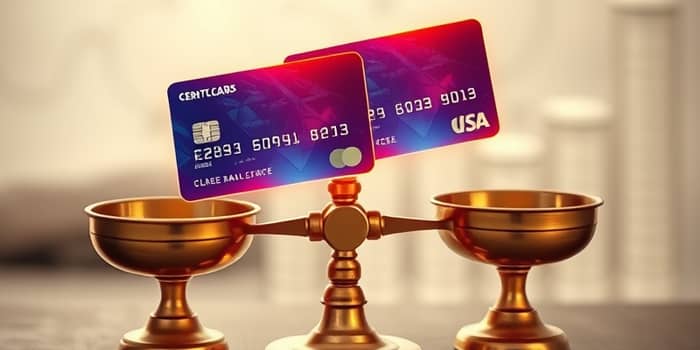
Applying for a new credit card can feel like navigating a labyrinth of unfamiliar jargon and conditional offers. Understanding the difference between pre-qualification and pre-approval is crucial for making empowered decisions that protect your credit score and maximize your chances of success.
In this article, we dissect each process, demystify common misconceptions, and arm you with practical strategies for smart credit moves. Whether you’re seeking a rewards card, a balance-transfer option, or simply want to gauge your eligibility, this guide will illuminate every step.
Pre-qualification is often the first step consumers take when exploring credit card offers. It involves a soft check of your credit and relies on minimal information you provide—such as your name, address, and estimated income.
This process gives you a quick sense of which cards you might be eligible for, without leaving a mark on your credit report. It’s not a contract, nor a promise of approval, but rather an indication that you meet the preliminary criteria for approval.
Pre-approval goes one level deeper. In many cases, card issuers partner with credit bureaus to prescreen consumers based on specific credit profiles. You might receive a direct offer—by mail, email, or phone—saying you are “pre-approved for Card X.”
Although still subject to final underwriting, pre-approval often signals a more thorough review of your financial background. For credit cards, the prescreen is usually a soft inquiry, so checking out offers won’t harm your score.
While both processes share the benefit of no impact on your score initially, they differ in depth, initiation, and perceived strength of the offer. Below is a snapshot of key differences:
Both pre-qualification and pre-approval offer advantages and potential pitfalls. Recognizing these can help you avoid surprises and make informed choices:
Approach credit applications with confidence and clarity by following these guidelines:
• Use pre-qualification tools on major issuer sites to gauge eligibility without risk.
• Keep an eye on time windows—most pre-approval letters specify 60–90 days before expiration.
• Compare multiple offers side by side, factoring in rewards, introductory rates, and annual fees.
• Track your credit score regularly and correct any errors that might derail approval.
By treating pre-approval and pre-qualification as planning tools rather than guarantees, you maintain control over your credit journey.
The distinction between pre-qualification and pre-approval becomes more pronounced in mortgage and auto loan markets. Mortgage pre-approval often requires detailed income documentation, employment verification, and a hard credit check—making it a powerful indicator of your buying power in a competitive housing market.
For auto loans, pre-qualification can help you lock in preliminary rates, while pre-approval may strengthen your negotiating position at the dealership. In both cases, a formal application triggers hard inquiries and deeper underwriting.
Pre-qualification and pre-approval are potent tools in your financial toolkit. Used wisely, they provide a glimpse into your lending potential without penalizing your credit score. Remember that neither process guarantees final approval—but both offer valuable insight into your financial standing and empower you to make informed, confident decisions.
By mastering these concepts, you’ll navigate the credit landscape with clarity, avoid common pitfalls, and secure the best possible terms for your next credit card, mortgage, or auto loan. Your financial future is in your hands—start by exploring your pre-qualified and pre-approved options today.
References













